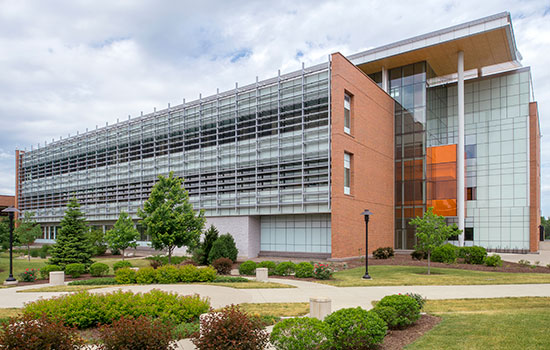New Pollution Prevention Institute Focuses on Green Manufacturing
RIT center will design sustainable technologies and support reduced use of toxic chemicals
A. Sue Weisler
A newly created Pollution Prevention Institute at Rochester Institute of Technology will focus on the design and testing of green manufacturing methods.
The research-and-development center will serve as a state and national source for new technologies in pollution prevention and sustainable design. The institute will give businesses technical support in decreasing the use of toxic chemicals, cutting waste generation, decreasing exposure risks to workers and promoting more efficient use of raw materials and energy.
“We are delighted that RIT has been selected to host this significant research and development center that will benefit all New Yorkers,” adds RIT President Bill Destler. “It will not only leverage the extensive expertise that RIT has accumulated in this important field, but it will enable us to collaborate with an extraordinary group of academic partners and technology organizations in the field.”
RIT will receive $2 million in assistance to launch the institute, and the state has called for another $4 million to be allocated to the center in the 2008-2009 executive budget. Initial activities will include the identification and implementation of practical prevention methods, the development of professional education and training programs and the creation of a communications pipeline for technical assistance.
The institute will also seek to create 16 research and development test beds, or technological laboratories, through partnerships with Clarkson University, Rensselaer Polytechnic Institute and the State University of New York at Buffalo. Capabilities of these test beds will include environmental engineering of nanomaterials at RIT, biofuels testing at Clarkson, polymer testing at Rensselaer and sustainable chemical process development at the University of Buffalo. In addition, institute leaders plan on creating partnerships with New York’s 10 Regional Technology Development Corporations to help disseminate data and strategy. These groups recently formed a green sustainability working group to bolster environmental opportunities across the state.
In 2005, the Federal Toxics Release Inventory showed that New York companies reported 312 million pounds of toxic-chemical waste generated and 42 million pounds released into the environment. A 2003 report by the New York State Assembly also found that a lack of a focused research and development center and on-site technical assistance for businesses was a major shortcoming in current pollution prevention activities.
The new pollution center will be housed in RIT’s Golisano Institute for Sustainability, which was formed in 2007 following a $10 million commitment to the university from B. Thomas Golisano. The Golisano Institute also includes a number of applied research organizations dedicated to enhancing the implementation of sustainable processes in all levels of society. It also is currently developing one of the world’s first doctoral programs in sustainability.









